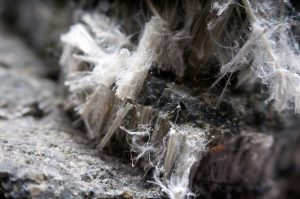South West England
- 01823 443898
Northern Ireland
- 02840 623566
Asbestos has become a household name, associated with older buildings, health warnings, and burdensome rules and regulations. But what exactly is asbestos, and why does it get so much attention? Let’s unravel the facts about this once widely used material.
Asbestos is a term for a group of minerals composed of microscopic fibres. Before its dangers were fully understood, it was a popular material in the construction industry due to its resistance to heat, electricity, and corrosion. These properties made it an excellent insulator for homes and buildings. There are several types of asbestos fibres, including chrysotile, amosite, and crocidolite, commonly found in various building materials also known as ACMs, Asbestos Containing Materials
Throughout the 20th century, asbestos was heavily mined and used in various industries around the world. Its versatility saw it woven into fabrics, mixed into cements, and even used in car brakes and hairdryers. However, by the latter half of the century, studies began to link asbestos exposure to serious health issues, leading to a dramatic decline in its use. Many countries have now banned asbestos, but it still exists in many older structures, posing risks during renovations, demolitions, and disasters.
Asbestos is most dangerous when it’s friable, meaning the material can easily crumble and release fibres into the air. When inhaled, these fibres can lodge in the lungs, leading to inflammation, scarring, and eventually serious diseases such as:

Asbestos was used in a multitude of products, including roofing sheets, ceiling and floor tiles, decorative coatings, and insulation. If your home was built or renovated before 2000, it might contain asbestos. It’s often difficult to identify asbestos-containing materials, as they look similar to asbestos-free materials. If you suspect asbestos in your home, don’t touch or disturb it. Hire a professional asbestos surveyor to test the materials.
Asbestos removal should always be performed by professionals. They have the equipment and training to safely remove the material, contain the fibres, and dispose of it according to legal and environmental standards. Attempting to remove asbestos without the proper expertise may result in contamination and significant health risks.

Laws and regulations surrounding asbestos vary from country to country. In the UK, the use of asbestos is banned, and strict rules govern its removal and disposal. Similar regulations are in place across the European Union, the United States, and other parts of the world, though enforcement and specific laws can differ.
Today, the word asbestos often conjures images of caution tape, disposable suits and face masks. This is a testament to the material’s hazardous legacy and the lengths we must now go to handle it safely. Asbestos remains a challenge in the demolition and renovation of older buildings, and it will likely continue to be an issue as we reconcile with past construction practices.
While asbestos is no longer the ‘miracle material’ it was once thought to be, it serves as a poignant reminder of the need for caution and rigorous research into the materials we use in our daily lives. Understanding the risks and history of asbestos is essential for anyone involved in the construction industry, as well as homeowners and workers who might encounter work on older buildings. By respecting the dangers it poses and following strict guidelines for its handling and removal, we can mitigate the risks and protect future generations from exposure.
For advice and help, reach out to G&L to see how we can support you.
We are accredited / certificated for:
Our UKAS accreditation is limited to those activities described on our UKAS schedule of accreditation.
Click here to find out more about all our accreditations / certifications.